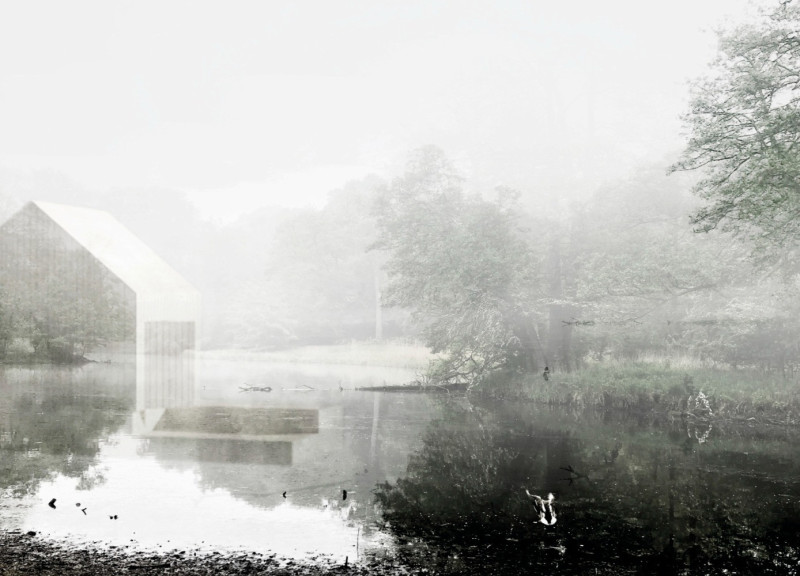5 key facts about this project
The Teamakers Guesthouse is an architectural project situated in a forested region designed to function both as a guest accommodation and a workshop dedicated to tea-making. This dual-purpose facility reflects a commitment to sustainability, local culture, and functionality, making it distinct in its approach to hospitality and community engagement. The architectural design ensures that the building harmonizes with its natural surroundings while also accommodating various socio-cultural activities.
The design employs a range of materials that highlight both sustainability and local craftsmanship. Wood, natural stone, and steel are the primary materials used in the construction. Wood serves structural roles and is utilized in facades and flooring, contributing to the aesthetic warmth of the interiors. Natural stone is selected for its historical significance and stability, particularly in the foundation and lower wall sections. Steel is incorporated to provide structural integrity, with an emphasis on recyclability. Insulation materials like eco-batts promote energy efficiency and sustainability.
The spatial organization of the Teamakers Guesthouse is characterized by its open floor plan, which allows for flexible usage and easy reconfiguration. Key areas include a workshop designated for tea-making, fostering local traditions, and a lounge area that encourages social interaction. The guest rooms provide essential amenities while emphasizing a calming atmosphere connected to nature. Architectural features such as pitched roofs with skylights facilitate natural light and ventilation throughout the building, reducing the need for artificial lighting.
The project differentiates itself through its unique emphasis on cultural relevance and environmental stewardship. Unlike conventional guesthouses, this design integrates local craftsmanship, highlighting artisanal traditions and allowing visitors to engage with the culture. Its architecture adapts dynamically to user needs, showcasing versatility in functionality while prioritizing minimal environmental impact. The use of renewable energy sources, like solar panels, demonstrates a commitment to sustainable practices and energy efficiency.
To further explore the architectural plans, sections, and design methodologies of the Teamakers Guesthouse, interested parties are encouraged to examine the project presentation. This will provide a comprehensive understanding of the architectural ideas that underpin this nuanced facility and its role within the community.





















































